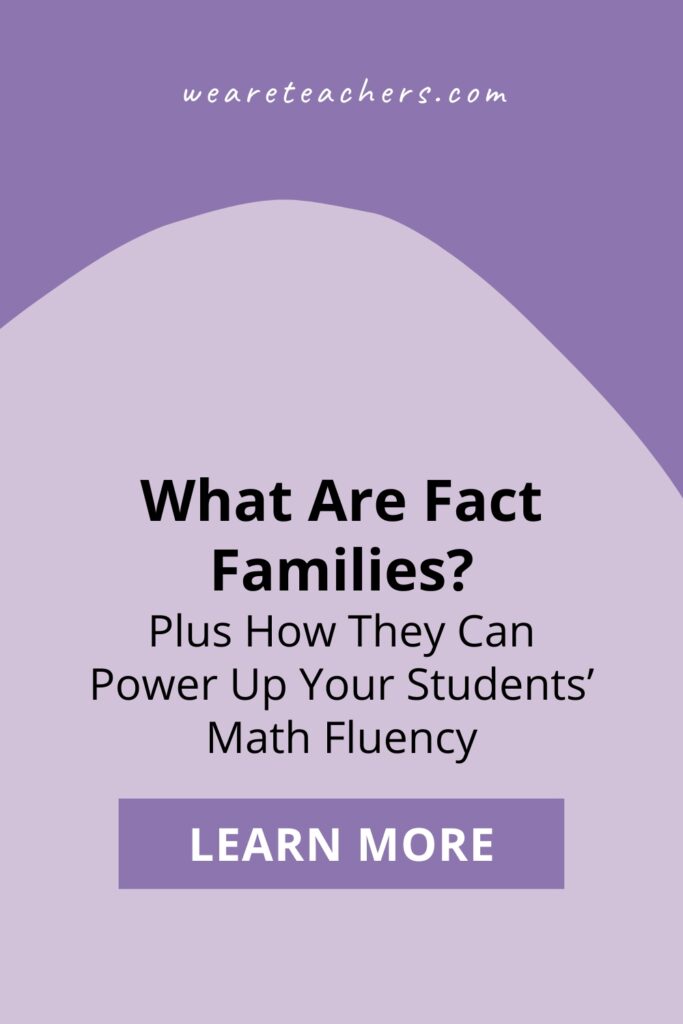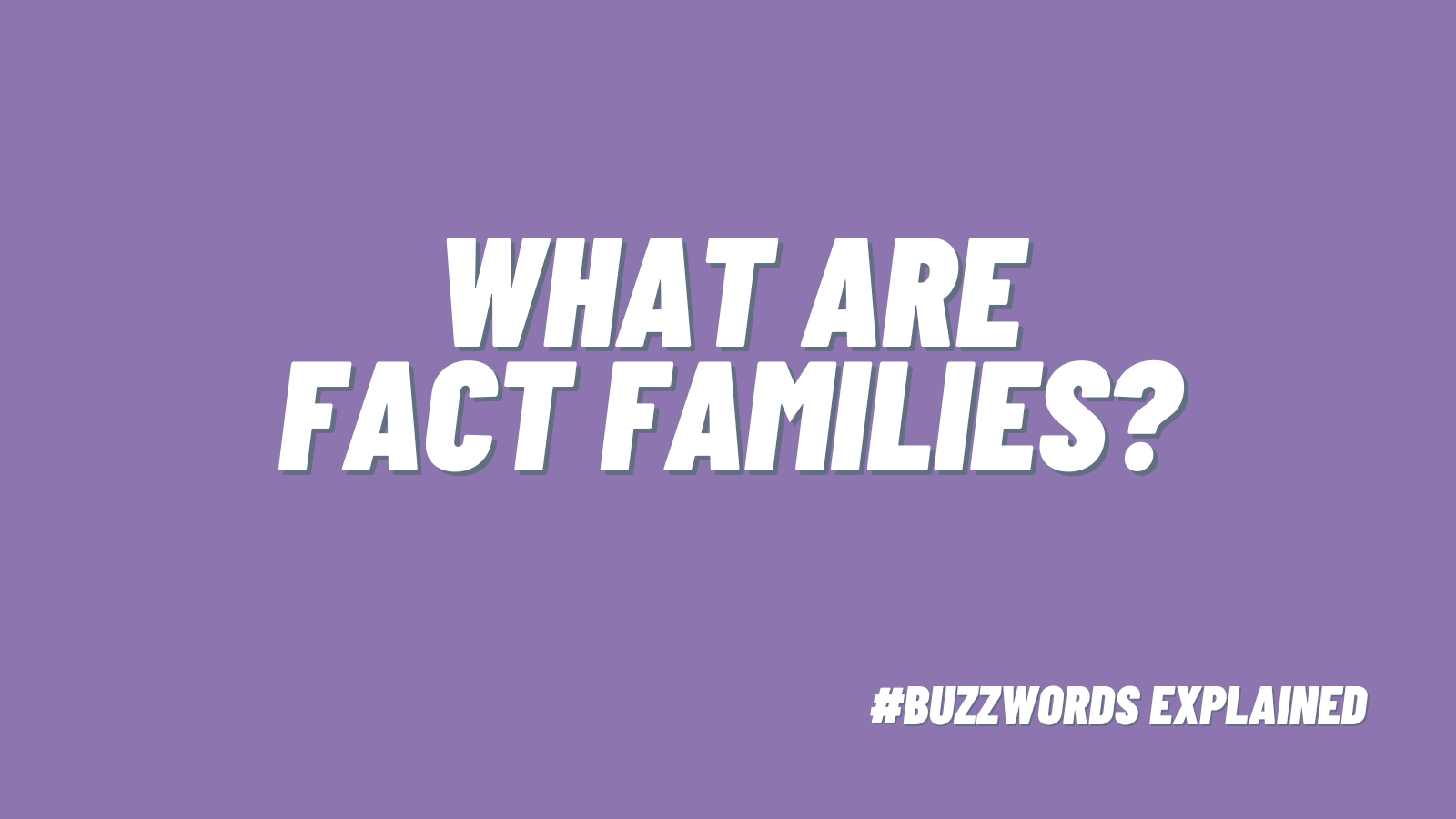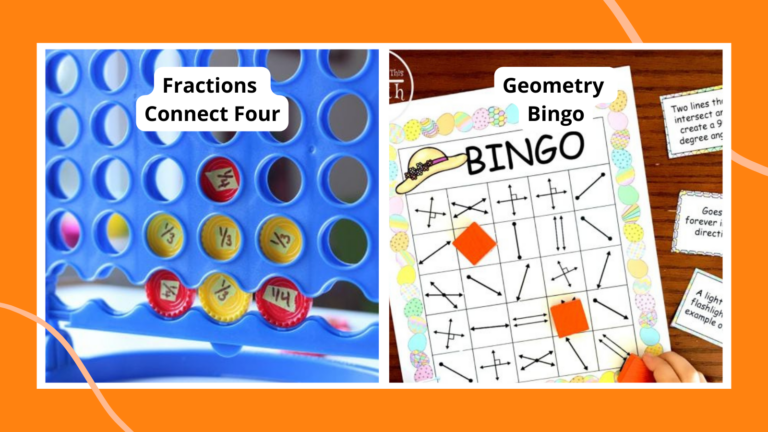I remember when I taught seventh grade, I had a student who didn’t want to do division because it was “too hard.” I gently reminded him that he could solve the problem without having to divide because if he knew that 9 x 8 = 72, then he knew that 72 divided by 8 is 9. Because, you know … fact families. Fact families are a powerful strategy for students of all grade levels. Need a refresher? Let’s jump in.
What are fact families?
A fact family is a group of related math facts using the same three numbers. The three numbers make a family of four facts. For example: 4+3=7, 3+4=7, 7-4=3, 7-3=4.
Fact families are a way to apply what you already know to a problem that you don’t. They use the relationship between inverse operations. For example, addition and subtraction work together, as do multiplication and division. While we know that it’s important to acknowledge and appreciate all math strategies that students might use to solve problems, fact families are strong contenders for being the most impactful in certain situations. For example, my students would find certain math operations more challenging than others. Once they accepted that addition/subtraction and multiplication/division “work together,” they could leverage the operation they were stronger in to help with the operation they struggled with.
Check out this addition/subtraction example:
Here’s a multiplication/division example:
Examples of fact families

From the example above, you can see how three numbers form a family of four math facts. This works with both addition and subtraction as well as multiplication and division.
How can fact families improve math fluency?
Fluency is the ability to quickly and accurately assess and solve problems. Understanding fact families helps students visualize the relationship between the numbers in a family. Namely, they can then apply that relationship to solving a new problem. If a student knows that 8 x 6 = 48, they also know that 48 ÷ 6 = 8 with practically no computation at all. Because they understand this relationship, they are empowered to move more quickly and effectively through any related addition, subtraction, multiplication, or division problem.
Strategies for teaching fact families
Bridging Ten
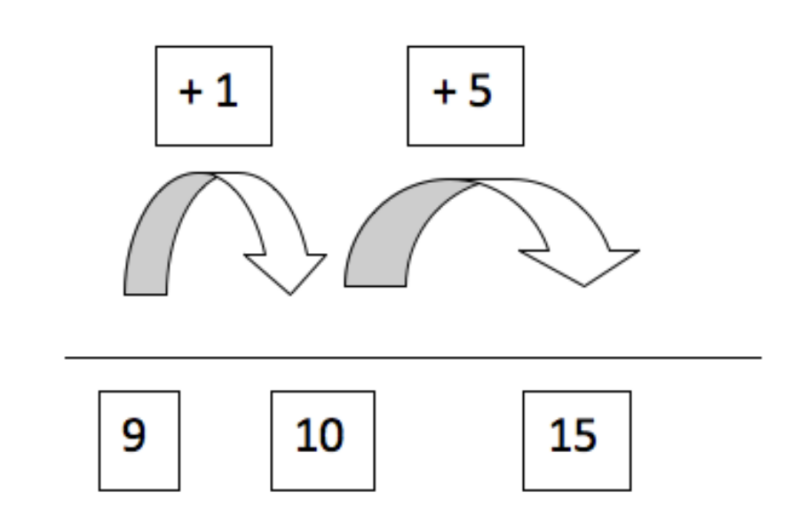
Bridging ten is a great introductory fact family strategy. For the example above, you want to get to the nearest 10. In order to do so, take 1 from the 6 so that the 9 becomes a 10. Now, this becomes a simpler math problem of 10 + 5, encouraging students to build their mental math skills.
Doubles

Doubles are a math fact where the same digit is added twice. For example, 6 + 6 or 9 + 9. When students become familiar with the sum of doubles, it becomes increasingly easier to solve more complex math problems. Knowing doubles helps students recognize more fact families. When they know 6 + 6 = 12, they can also decipher that 12 – 6 = 6.
Count-On

Using the count-on strategy, students take a larger number and then count-on to the second digit in the problem. For the example above, take the number 4 and count forward 3 times to get to 7. This eventually will become an easy mental math strategy for students, increasing their fact fluency.
Origo’s Book and Box of Facts
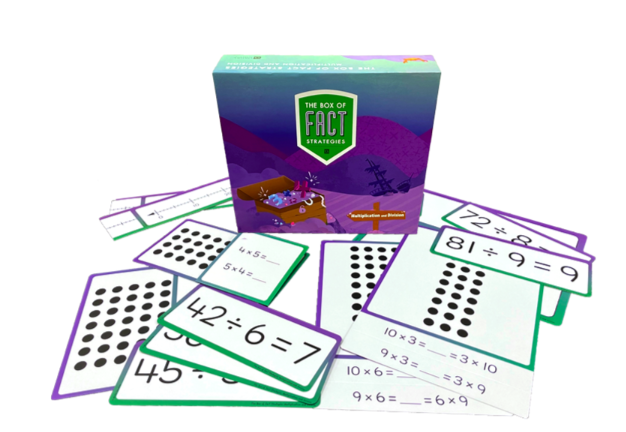
Origo’s Book and Box of Facts includes a plethora of strategies for addition/subtraction and multiplication/division fact families. You’ll get physical and digital resources including fact cards, sharing mats, and online practice games. Plus, apply for the Origo grant program to receive a free Book and Box of Fact Strategies for your classroom!
Fact family classroom activities
Check out these creative ways to make fact families a part of your math routine.

- This chart is a great way to provide your students with a reference to fact families. Involve them in the creation of the chart, and have students help solve the example problems.
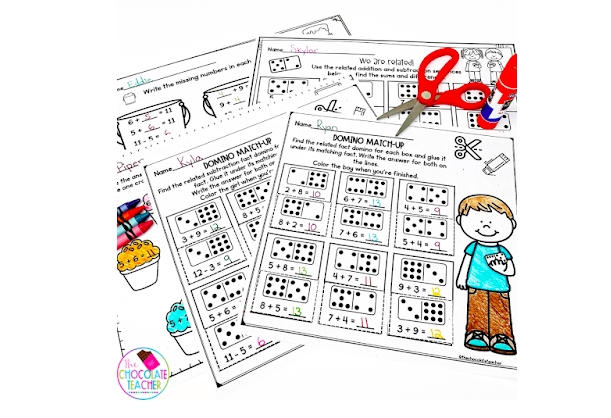
- It’s not a secret that students like games. Practicing math using dominoes is a great way to infuse fun into solving problems. The Chocolate Teacher brings us independent practice using no-prep worksheets.
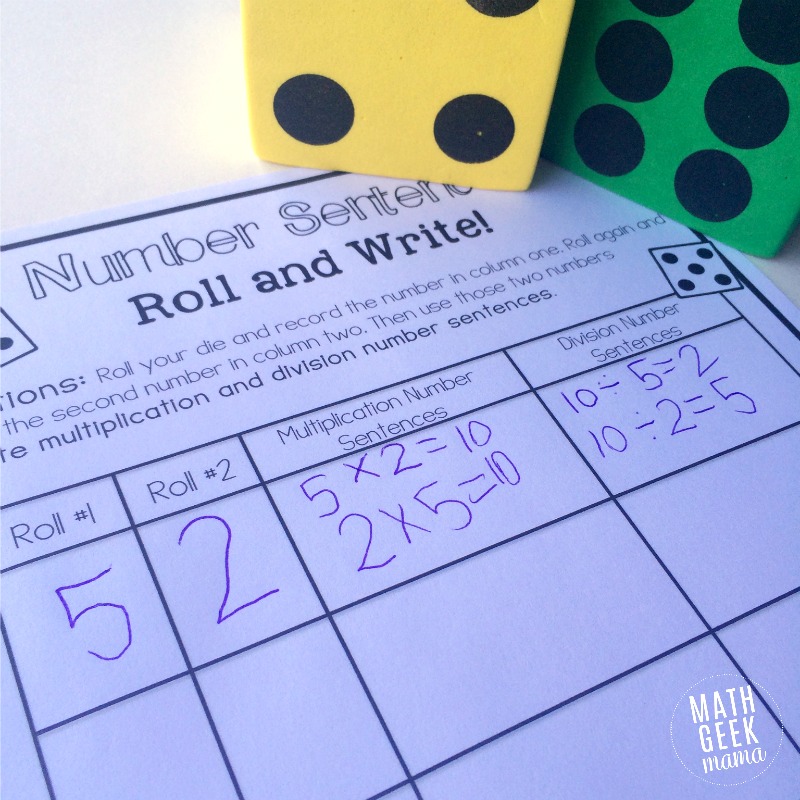
- Try out a challenge. This exciting dice game is brought to you by Math Geek Mama. It can be played with a partner, small group, or individually. Students take turns rolling the die and filling in their number sentences based on fact families.

- Add movement! Stories by Storie knows that students like (or need!) to get up and move. Why not practice their fact families while getting their wiggles out?
Don’t forget to check out The Book and Box of Fact Strategies from Origo to build fact fluency!
